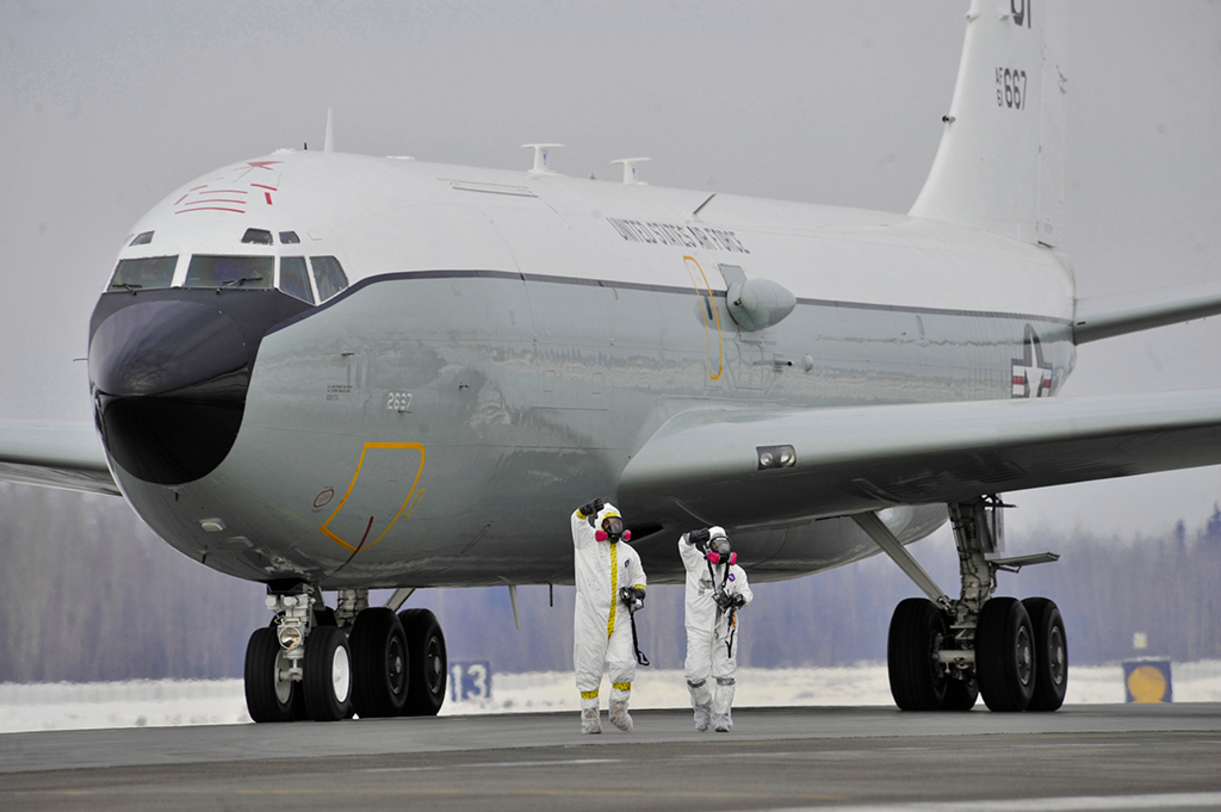http://www.interfax.com/newsinf.asp?pg=4&id=736587
MOSCOW. Feb 21 (Interfax) - The Russian Defense Ministry has recently been recording the presence of NATO vessels carrying missile weapons in the Black Sea and reconnaissance flights near its borders increasingly more often, Russian Defense Minister Gen. of the Army Sergei Shoigu said.
"In the past ten years, the overall number of the alliance's reconnaissance flights near our borders has virtually tripled, and it has grown eight times particularly in the southwest of Russia. Just for comparison, there were 107 such flights (annually) in the 1990s, 298 in the 2000s, and 875 in 2016. We have also been recording increasingly more frequently the presence of NATO ships carrying missile weapons in the Black Sea," Shoigu said in a lecture at the opening of the 2nd all-Russia youth forum on 'International military-technical and military-economic cooperation: modern tendencies' at the Moscow State Institute of International Relations (MGIMO) on Thursday.
"The North Atlantic alliance's leadership keeps pursuing a course toward abandoning all forms of practical cooperation with us and is continuing to frighten itself with a Russian threat," he said.
"Instead of combining efforts to fight terrorism, the alliance has declared Russia the main threat and is building up its military capacity along our borders," he said.
"NATO has significantly increased the number of exercises in Eastern Europe and in the Baltic and Black Seas. They are often openly anti-Russian in their nature and essence," Shoigu said.
********
16:49
U.S. ABM system in Europe brought to initial operational readiness level, but Russia ready to establish dialogue with NATO - Shoigu (Part 2)
M1A2 Abram tank Constanta County , Romania
http://www.businessinsider.com/us-d...tecting-a-spike-of-radiation-in-europe-2017-2
On Feb. 17, 2017, U.S. Air Force
WC-135C Constant Phoenix Nuclear explosion “sniffer,” serial number 62-3582, using radio callsign “Cobra 55” deployed to RAF Mildenhall, UK.
As we have already reported the WC-135 is a derivative of the Boeing C-135 transport and support plane. Two of these aircraft are in service today out of the ten examples operated since 1963.
The aircraft are flown by flight crews from the 45th Reconnaissance Squadron from Offutt Air Force Base while mission crews are staffed by Detachment 1 from the Air Force Technical Applications Center.
The WC-135, known as the “sniffer” or “weather bird” by its crews, can carry up to 33 personnel. However, crew compliments are kept to a minimum during mission flights in order to lessen levels of radioactive exposure.
Effluent gasses are gathered by two scoops on the sides of the fuselage, which in turn trap fallout particles on filters. The mission crews have the ability to analyze the fallout residue in real-time, helping to confirm the presence of nuclear fallout and possibly determine the characteristics of the warhead involved: that’s why the aircraft is important to confirm the type of explosion of today’s test.
Along with monitoring nuke testing, the WC-135 is used to track radioactive activity as happened after the Chernobyl nuclear plant disaster in the Soviet Union in 1986 and
Fukushima incident back in 2011.
One of these aircraft was deployed near North Korea in anticipation of Kim Jong Un
rocket launches then was spotted transiting the UK airspace in August 2013 raising
speculations it was used in Syria thanks to the ability to detect chemical substances down wind from the attack area days, or weeks after they were dispersed.
Although they cross the European airspace every now and then, their deployment in the Old Continent is somehow rare. As of yet, there has been no official statement from the U.S. military about the reasons why such nuclear research aircraft was deployed there. However, many sources suggest the aircraft was tasked with investigating the spike in Iodine levels detected in northern Europe since the beginning of January.
Iodine-131 (131I), a radionuclide of anthropogenic origin,
has recently been detected in tiny amounts in the ground-level atmosphere in Europe. The preliminary report states it was first found during week 2 of January 2017 in northern Norway. Iodine-131 was also detected in Finland, Poland, Czech Republic, Germany, France and Spain, until the end of January.
US Air Force via The Aviationist
However, no one seems to know the reason behind the released Iodine-131. Along with nuclear power plants, the isotope is also widely used in medicine and its presence in the air could be the effect of several different incidents.
Or,
as someone speculates, it could have been the side effect of a test of a new nuclear warhead in Russia: an unlikely (considered the ability to detect nuke tests through satellites and seismic detectors) violation of Nuclear Test Ban Treaty.
Maybe the WC-135 will help authorities find out the origin of the Iodine-131.


























